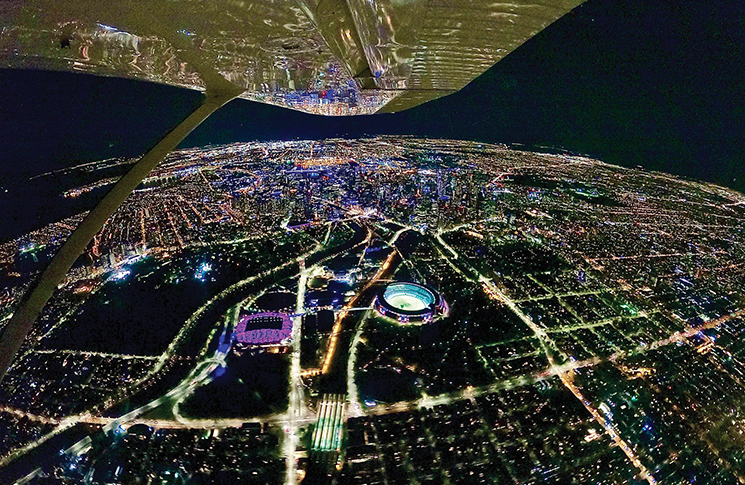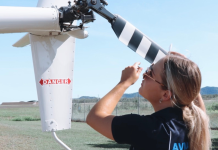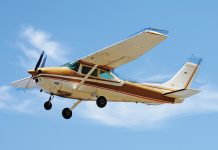Back in 2009 when I was learning to fly at Camden, I made my second ‘embarrassing student’ mistake – my first had been turning the wrong way in the circuit after a runway change and nearly flying into restricted airspace. In those days, Camden was a mixed-class aerodrome; on the weekend, it was a towered airport in what we now call a Metro D, but on weekdays, it operated as a CTAF in Class G airspace.
With most of my flying experience in uncontrolled airspace, my interaction with the tower was limited. On this day, carrying one of my first passengers and restricted to the training area, I called inbound after a local flight and joined the circuit downwind. On final, I was high and, instead of going around, forced the aircraft down, landing long and missing the last exit. Rolling to the runway’s end, I called ‘backtracking’ but was sharply instructed to ‘hold short’. The tower reminded me that in Class D airspace, clearance is required to enter, cross or backtrack.
Shaken by my experience, I booked a lesson with my instructor to reiterate the differences between flying in Camden in Classes D and G – I discovered that operations at Metro D airports come with unique challenges for both air traffic control (ATC) and pilots.
Airservices says some errors occur because the pilot is not familiar with Metro D procedures or has not complied with an ATC instruction, despite providing a readback, as I demonstrated by failing to request a clearance to backtrack.
Lilydale-based instructor Carl Brewer maintains that preparation is key when flying into controlled airspace (CTA) for the first time. ‘Be prepared and understand what ATC are going to ask you to do so you won’t be surprised by it,’ he says. ‘Get an air band receiver or go to liveatc.net to listen in so you can get used to it. Practise scenarios on the ground with your instructor, with them role-playing ATC, starting with easy situations and then more complex ones.’
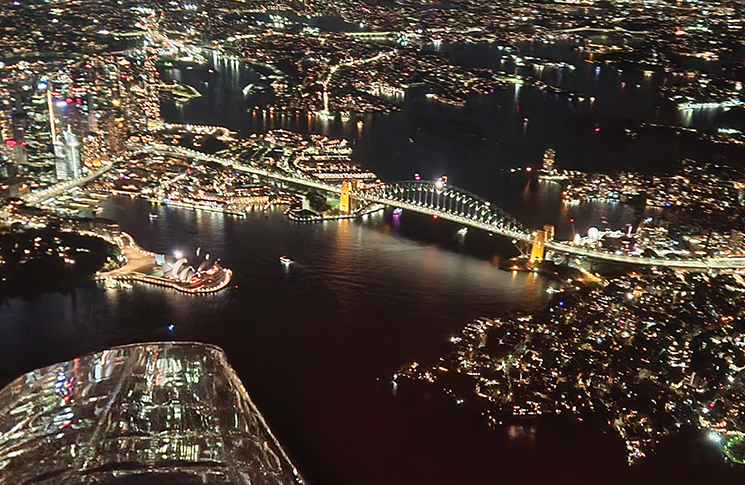
Bianca Wise is a senior instructor at Flight Training Adelaide in Parafield. In a recent podcast for CASA’s Pilot safety hub, she discusses flying in Class D airspace. ‘It’s important to remember that your flight does not finish until your engines are shut down,’ she says.
She offers the following advice for flying in Metro D:
- assumption is the mother of mistakes – be aware of regular changes such as runway or taxiway directions, which can occur throughout the day
- treat all runways as active at all times
- be aware of ground ops, such as refuellers and follow-me cars
- be aware of rotary activity
- never, ever be afraid to ask ATC if you don’t understand something or are not clear
- if you’re unfamiliar with an aerodrome, call the tower ahead of your flight to ask about local procedures. For your inbound call, alert them again, saying ‘unfamiliar with the area’.
- be sure to make a detailed study of the aerodrome page in ERSA and remember the VFRG and Airservices’ aerodrome charts are invaluable resources
- as every Class D is different, read the special procedures in ERSA.
The VFRG and Airservices’ aerodrome charts are invaluable resources, as well as the CASA Pilot safety hub.
Entering Class D airspace
Establishing two-way communications between the aircraft and ATC constitutes a clearance for you to enter Class D airspace. Two-way communications are established when ATC responds to you with either your aircraft callsign or your callsign and instructions. Where ATC responds to your initial radio call without using your aircraft callsign, two-way communication has not been established (meaning no clearance), or ATC may use terminology advising clearance is not immediately available.
You should plan your entry to the aerodrome in Class D airspace via a VFR reporting point identified on the VTC. All flights operating in Class E and G airspace requesting a clearance to operate in Class D airspace must advise position, level and tracking details when making first contact with ATC.
‘Be aware that every Class D has its quirks and if you’re new to it, generic training only goes so far,’ Brewer says. ‘There’s no substitute for roleplay for that particular aerodrome, and perhaps a few real flights with an instructor to bail you out, if things become too hectic.’
Another major feature of Class D aerodromes is that they can be incredibly busy with both training aircraft and commercial operations, such as freight and medivac. ‘Recreational aircraft are a lot slower than the GA traffic, so sequencing is an issue to be aware of,’ he says. ‘ATC will want you to fit into the pattern while being mindful of the faster Cessna 310 on base behind you. Having a visual image of the circuit traffic is vital.’
Going to town: Metro Class D vs Regional Class D aerodromes
This article focuses on operating in Class D airspace. The same principles apply when operating at both metropolitan Class D (Metro D) and Regional Class D aerodromes. Pilots must establish two-way communications with the tower and receive clearance prior to entering the airspace, and all flights are provided with some level of ATC service.
Metro Class D airports
These are in or near major metropolitan areas and often close to Class C airports. They have high traffic density, including general aviation, training flights and small regional airline operations. They include Archerfield near Brisbane, Bankstown near Sydney, Moorabbin near Melbourne, Parafield near Adelaide and Jandakot near Perth.
Regional Class D airports
These are outside major metropolitan areas, often serving smaller towns or cities. They often have a lower traffic density than Metro Class D airports, primarily supporting general aviation, some regional airline services and private aircraft operations. They include Albury, Coffs Harbour, Tamworth and Launceston.
Airservices closely monitors the safety trend at Metro D aerodromes, where there is a higher occurrence rate than that at Regional Class D aerodromes. Around 95% of aircraft movements at these aerodromes are operating under the VFR. While other Class D aerodromes have mostly arriving and departing traffic, around 70% of aircraft movements at Metro D is circuit training.
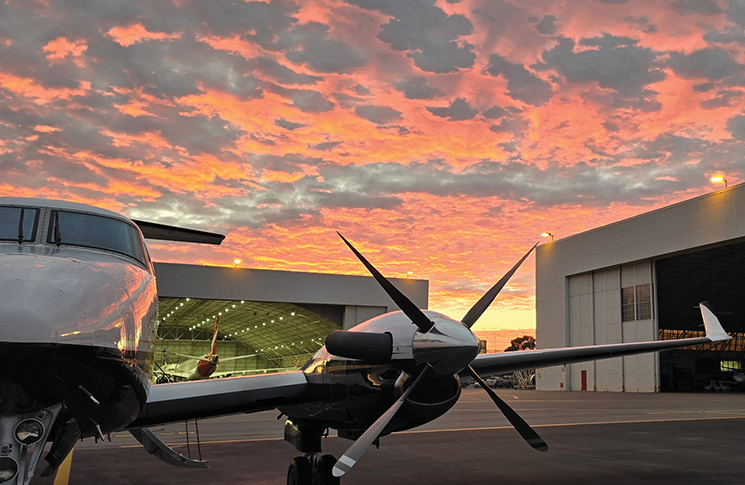
Uptown funk: Flying from Class D for the first time
When operating from a controlled aerodrome, you must:
- have an ATC clearance to land, taxi or take-off
- maintain a continuous listening watch on the ATC frequency for the aerodrome
- if you cannot maintain a continuous listening watch, be alert for any visual signals from the tower.
In addition to your initial clearance, you will also need a specific clearance from ATC for take-off and landing, entering, crossing, backtracking or taxiing along any runway, regardless of whether the runway is active.
Wheels rolling: Taxi clearance procedures
Before operating on the manoeuvring area at controlled aerodromes, a taxi clearance from ATC is mandatory. When receiving a taxi instruction with a holding point, pilots must read back the designator; for example, ‘Hold at holding point Charlie one, Zulu Tango Quebec.’
At controlled aerodromes with ATIS, pilots must obtain the current ATIS before taxiing and provide the ATIS code when requesting clearance. VFR training flights should specify dual or solo when seeking taxi clearance.
ATC may instruct you to ‘cross runway (number)’. If instructed to hold short of a runway, ATC will later provide clearance to cross.
Pilots unfamiliar with the aerodrome should request detailed taxi instructions.
Aircraft should change to tower frequency close to, or at, the holding point of the nominated runway, when ready for take-off, or in the holding bay if directed.
At Class D aerodromes at which parallel runway operations are in progress, you must identify the departure runway when reporting ready; for example, ‘Zulu Tango Quebec ready, runway right’.
For operations wholly within a Class D CTR, you must report ready with intentions, for example, circuits, training area north, etc.
An ATC clearance to line up does not authorise you to backtrack on the runway.
Ask nicely: Obtaining your airways clearance
You are responsible for obtaining an airways clearance and once it has been obtained, you must not change or deviate from your cleared route or change level without first obtaining ATC clearance to do so.
If you can, obtain your airways clearance prior to taxi. This helps reduce the length of transmissions, workload and errors in readbacks.
If you are unsure if the tower is active, listen to the ATIS. If the tower is not active, the ATIS will broadcast ‘information Zulu’ and will include the time the tower opens and the CTAF frequency.
Check ERSA and NOTAMs for the airports involved in your flight. Metro D airports have unique procedures, with specific departure and arrival altitudes and dedicated runways for circuit training. Be sure to make a detailed study of the aerodrome page in ERSA and remember that the VFRG and Airservices’ aerodrome charts are invaluable resources, as well as the CASA Pilot safety hub.
On initial contact, you must inform ATC of:
- your aircraft callsign
- your aircraft type
- your current position and (for arrival) level
- your intentions
- confirmation you have received the ATIS information.
Departure report
At certain Class D aerodromes, where the tower also provides a procedural approach control service (see ERSA), you must report on the tower frequency after take-off with:
- track information
- the last assigned altitude.
However, this report is not required:
- for VFR aircraft departing the control zone directly into Class G airspace
- for aircraft that have been instructed to contact Centre, Approach or Departures once airborne – in which case an airborne report will be made on the relevant frequency.
Runway entry
An ATC clearance to line up does not authorise you to backtrack on the runway. When a backtrack on the runway for take-off is required, you must indicate your intention to ATC and obtain a clearance to backtrack prior to entering the runway. When a backtrack on the runway will involve crossing an intersecting runway, the backtrack instruction must include either a ‘cross runway (number)’ instruction or an instruction to ‘hold short’ of that runway.
Take-off clearance
You must not take-off unless the specific clearance ‘cleared for take-off’ has been received. A clearance for immediate take-off may be issued to an aircraft before it enters the runway. On acceptance of such clearance, the aircraft should taxi out to the runway and take-off in one continuous movement.
Once airborne, the tower will hand the pilot over to the appropriate frequency, if applicable.
You must not land unless the specific clearance ‘cleared to land runway (number)’ or ‘cleared touch and go’ has been received.
Doing it right
Whether you’re at a Metro D or Regional Class D aerodrome, understanding the procedures and respecting the responsibilities of controlled airspace ensures safe and efficient operations for all users. By preparing thoroughly and staying alert, pilots can navigate Class D airspace confidently.
Controlled airspace and aerodromes is one of the special topics on our Pilot safety hub. Refresh your knowledge at casa.gov.au/pilots.
CONTROLLED AIRSPACE IN A NUTSHELL
Controlled airspace (CTA) is where ATC manages aircraft operations to ensure safety and efficiency. Within CTA, pilots must follow specific rules, maintain communication with ATC and, in most cases, obtain clearances before entering or operating within the area.
Class A: This high-level airspace is used predominately by commercial and passenger jets. Only IFR flights are permitted and require an ATC clearance. All flights are provided with an ATC service and are positively separated from each other.
Class C: This is the CTA surrounding major airports. Both IFR and VFR flights are permitted and must communicate with ATC. IFR aircraft are positively separated from both IFR and VFR aircraft. VFR aircraft are provided traffic information on other VFR aircraft.
Class D: This is the CTA that surrounds general aviation and regional airports equipped with a control tower. All flights require ATC clearance.
Class E: This mid-level en route CTA is open to both IFR and VFR aircraft. IFR flights are required to communicate with ATC and must request ATC clearance.
Class G: This airspace is uncontrolled. Both IFR and VFR aircraft are permitted and neither require ATC clearance.

